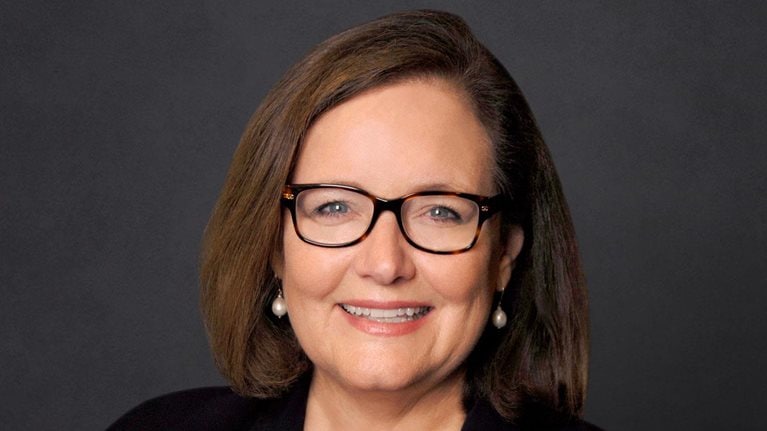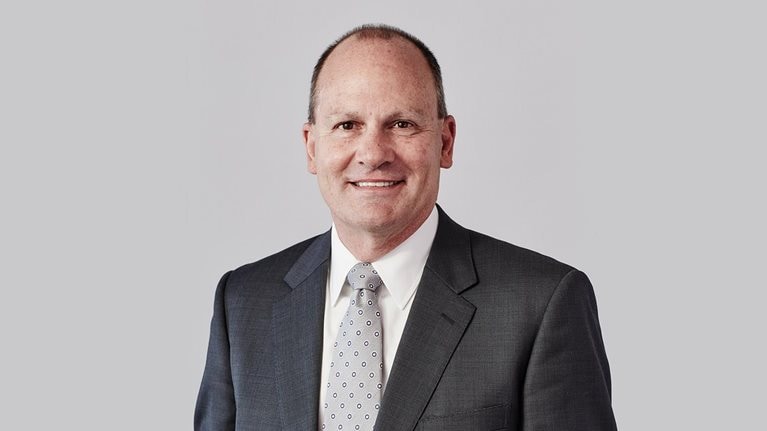Australia is no stranger to crises. Heatwaves, bushfires, droughts, and floods besiege this vast, unique country, posing a significant challenge to all sectors of the Australian public and government. The 2019–2020 fire season, known as the “Black Summer”, saw bushfires on an unprecedented scale that brought multiple challenges. Still reeling from the impacts of the bushfires, Australia soon faced a different crisis: the COVID-19 pandemic, and with it, a sweep of new challenges. However, according to Major General Andrew Hocking, the relationships and trust that had been built through the response to the bushfires helped Australia’s response to the pandemic.
Hocking is a longstanding figure in the world of Australian crisis response. He served as Deputy Coordinator at the National Bushfire Recovery Agency and is a proud serving member of the Australian Defence Force and Army. His journey in crisis management began when he served as a battalion commander in Townsville, responding to Cyclone Yasi in 2011, where his troops had direct involvement with supporting communities in their recovery, particularly in the early stages. He previously served in Brisbane as a brigade commander where he was a member of the Queensland Disaster Management Committee, chaired by the Premier. His troops provided defence assistance to the civil community, including bushfire responses to the 2019 and 2020 fires.
Roland Dillon, partner at McKinsey’s Melbourne office, spoke with Major General Hocking about the importance of trust in building resilience, why a focus on communities is important, and lessons learned from dealing with both the bushfires and the COVID-19 pandemic.
Forging connections and resilience in times of crisis
McKinsey: How do you think the bushfire response helped prepare Australia for COVID-19?
Hocking: There was clearly a strong interplay between the country transitioning from its response to bushfires at a community and national level to it responding to the COVID-19 pandemic.
The bushfires in January 2020, unlike a lot of other bushfires, captured the whole of Australia’s (if not the world’s) attention and made people disaster-aware. While that’s tragic, in many ways it created a set of awareness conditions—awareness of disasters and the real impacts they have on individuals. The bushfires needed everyone to swing into action. In some ways, this aided the national response to the pandemic rather than if it had followed the normal state of play, as the stress of the bushfires forced us to adapt quickly.
I think the bushfires also forged connections at the community level, between state governments and the Commonwealth government, and across sectors. Problems of the magnitude of COVID-19, bushfires, drought, or floods can’t be dealt with by one part of the nation alone. The size and complexity of the bushfires required a “Team Australia” approach to support people. The Commonwealth government couldn’t just say, “States, you’ve got all the resources, over to you.”
All levels of government had to come together to share resources and expertise, and ensure coordination to tackle the crisis. It built cross-jurisdiction and cross-sector partnerships where the Commonwealth, state, and local governments dealt with people, charities, and businesses like they had never done before. Of course, that was so important in their approach to COVID-19 as well.
The other critical thing the bushfires did in preparation for COVID-19 was build trust—from community level all the way up to national institutions. I’m not saying trust was in deficit, but the bushfires helped fortify trust relationships. Structures, processes, and mechanisms are necessary, but trust relationships are fundamental. In many ways, I think the bushfires created stress first but then, through that stress, created a set of connections. The trust that was built was then leveraged as COVID-19 started to impact the nation.
Building trust by working together
McKinsey: Many people talk about collaborating and building trust. Practically, how can the trust necessary for effective collaboration be achieved?
Hocking: The key point about collaboration and trust is that it’s a human endeavor. Institutions are inanimate—they don’t trust each other; they transact with each other. It’s the humans within them who collaborate. However, trust is probably your biggest inhibitor.
How do you build trust? Well, there’s lots of ways, but there are some simple things that are almost irreducible. You can’t build it when you’re not present together. I think it’s a natural human condition that, when you’re apart and operating in separate silos or systems, you build distrust or skepticism. You only develop trust by being and working together as individuals; it’s all about relationships.
We use a phrase in the military, “Train hard, fight easy.” This applies to relationships, too. There’s a choice to be made. Do you under-invest in training, not put in the effort to develop the relationships, and then have to learn rapidly when times of crisis arise? Or do you train hard, understand the system, understand the humans in it, and make a consistent investment in building those relationships? This may cost you time and effort, but it’s imperative that we continue to fuel these relationships by doing things together and celebrating the victories together. All the relationships that we built during this recovery, we’re now going to retool and tweak with a focus on resilience.
The key point about collaboration and trust is that it’s a human endeavor. Institutions are inanimate—they don’t trust each other; they transact with each other. It’s the humans within them who collaborate. However, trust is probably your biggest inhibitor.
Secondly, trust is not something you can inject and suddenly accelerate at a disaster’s convenience; you need time. The big inhibitor for operations, whether military, coalition, disaster support, or community, is often the irreducible speed that it takes to build trust.
There’s a saying that you can only move at the speed of trust, which I genuinely believe. It’s measured in years, not weeks, or days. As such, you need a vessel that brings people together and you need time to build those relationships to forge trust.
Importantly, the relationships need to be sustained, not just for disaster, but in general. From there, when we arrive at the next disaster, it’s not, “G’day, I’m Andrew Hocking. I know nothing about this space—and can you please trust me, even though you don’t know me?” There needs to be a fundamental change in the way we think and resource to ensure that building relationships and maintaining trust is built into our strategies.

Rallying around purpose: An interview with the managing director and CEO of Insurance Australia Group
Serving communities, staying robust
McKinsey: How do you ensure resilience in the face of crises?
Hocking: Whether it’s the private sector, philanthropic sector, Commonwealth government, state government, department, or everything in between, to ensure resilience in situations like this, we need to ask the question, “What’s the national responsibility here?” Instead of focusing on the institution, the collective focus should be on the national responsibility: the community.
When we serve the community, we all come together. As military people, we often work overseas, which can lead to an “out of sight, out of mind” way of thinking. This can be very challenging for defence people—when you see your countrymen and women in direct stress and have no avenue to serve them.
In many ways, the bushfires gave soldiers the ability to serve the people firsthand. It heightened the sense that we belong to the nation and are part of communities. These are important ingredients that bring different sectors together and help to drop the barriers that have been built over years.
After decades of systems and mechanisms and asking, “Who’s your boss and who do you work for?” the bushfires gave us the opportunity to drop the brands and keep focused on the goal. There was a common, “Hey, we’re all in here,” as we left our brands at the door and brought our purpose and focus together. I think this only had positive benefits for our resilience during the bushfires, as well as the pandemic.
We all joined to serve. We’re all the same in this regard; we just serve in different ways. It’s important to reflect on our service and ask the question, “Am I serving up, or am I serving down, or is it a combination of both?” There’s a balance that we need to get right. Doing so, however, is difficult. It takes a set of values for that brand to be dropped, for purpose to be the focus. The ability to challenge and evolve is something that we should be very proud of. It’s in our national DNA to be innovative and drive change.
However, be prepared to be drawn off the path of commonality and ask how you are going to remain on that path. Humility is an important aspect, as we should be reminded that it’s not about the brand, but about the outcome. If we can sustain such commonality, it will only have benefits to the nation as we move forward. Through further investments in training, exercising, and education regimes that are agnostic of what badge you wear, we can build a system that brings all levels of government and all sectors together, building relationships and a common understanding.
A new era for crisis response
McKinsey: How do you think the pandemic has shaped Australia’s response to crises?
Hocking: There are many downsides for any community with the convergence of two disasters, but Australia saw many disasters all in the same calendar year. Communities were still recovering from the bushfires when COVID-19, a drought, and floods hit. This meant that communities were more fragile, stressed, and traumatized. As time went on and COVID-19 started to rise in magnitude, there was always a risk that the communities impacted by the bushfires would be forgotten, or at least be gathered up in the broader challenges that the nation was facing.
There was a real determination not to underplay COVID-19, but at the same time to make sure that decision makers and policy makers didn’t forget about this significant group of people that had been impacted by these many things in addition to COVID-19.
We needed to re-address leadership. Everyone looks at leadership in a hierarchical sense, but leadership comes from absolutely every direction. In fact, most of it comes from below, not above. That’s no disrespect to my leaders, but it is both.
Out of COVID-19 arose many voluntary leaders in communities who helped build relationships and enabled communities in their recovery and in life in general. We need to pay tribute to these leaders and determine how we might better support them. If we can find a way to do that and ease their load a little bit, then the sky’s the limit and we’ll be a better country.
We are so much better for this experience, but there’s much more work to be done still. We all need to be part of that conversation, regardless of who you work for or where you sit in our national system.
The pandemic brought many challenges. Due to the lockdowns, communities couldn’t communicate with each other. Communication is such an important part of hope and healing and setting the human conditions to move forward in recovery. To cope, we established virtual ways of doing things. This made it easier for us to meet more rapidly and regularly and provided access to a broader group of people. In addition, the speed of iteration and virtual connection helped build common understanding.
In fact, I think that our understanding of the problem and the challenges, and our ability to connect resources with need, were almost better when we went into the virtual environment because of COVID-19 constraints. Through the pandemic, we truly discovered the power of technology to handle crises efficiently; an approach that we will continue to use for bushfire recovery.
If we can work out a way, particularly in between disasters, to continue cooperative, collaborative, community-enabling, and community-focused behavior, then we’ll fully harness the resources, the personality, and the culture of this great country to solve problems that are big, but well and truly within our national resources to solve.
Comments and opinions expressed by interviewees are their own. McKinsey & Company does not endorse them, nor do they represent or reflect its opinions, policies, or positions.

